
The SPIRE social lens builds upon a strategic multi-stakeholder framework that aims to transform the current urban social dynamics into a new model, based on three primary actions:
1. Citizen engagement as a high priority for the SPIRE project and partners since the focus of the participatory approach is in the spirit of the project.
2. Co-creation processes as the tool to ensure consistency between citizens and future ecological (and experimental) public spaces.
3. Active participation of the local community as a critical milestone to ensure the success of the re-naturalization of the five selected pilot sites through Plantathlons activities and the use of the innovative iLEU digital reward system.
Collecting data and engaging citizens
In November 2019, the SPIRE team began the citizen engagement process with an overview of citizens’ and stakeholders’ perceptions about the state-of-play of the economy, labour market, socio-cultural life, environment and public spacedimensions in Baia Mare through surveys, semi-structured interviews and focus group meetings.
Questionnaires were circulated among the neighbourhood directly targeted by SPIRE. For instance, within the environment and public space dimension, we can see in Figure 2 how citizens perceive the threats to personal health posed by soil and water contamination. However, concerning the fear of contracting a pollution-related illness, around 20,5% of respondents agree or strongly agree, while approximately 43% strongly disagree or disagree
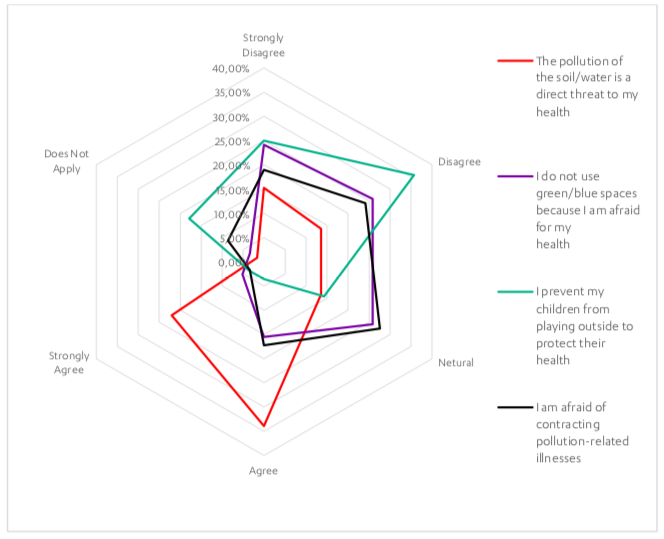
Fig. 2: Questionnaire Results of Citizens’ Perception of Environmental Pollution Risks. Source: SPIRE Desk analysis, Research repository & Awareness appraisal report.
The strategy approach had to be shifted from in-person to online questionnaires and workshops due to the COVID-19 situation. In July 2020, a public survey was launched to assess the level of awareness and openness among citizens concerning the critical ecosystem services that will be co-developed and implemented in Baia Mare: Phytoremediation and biomass upcycling, Dynamic land-use management and participatory planning, and Local value systems and blockchain support services.
Answers were accepted on Facebook, LinkedIn, and Twitter. The results set the baseline for the citizenry's levels of awareness and openness towards SPIRE's topics, activities, and objectives:
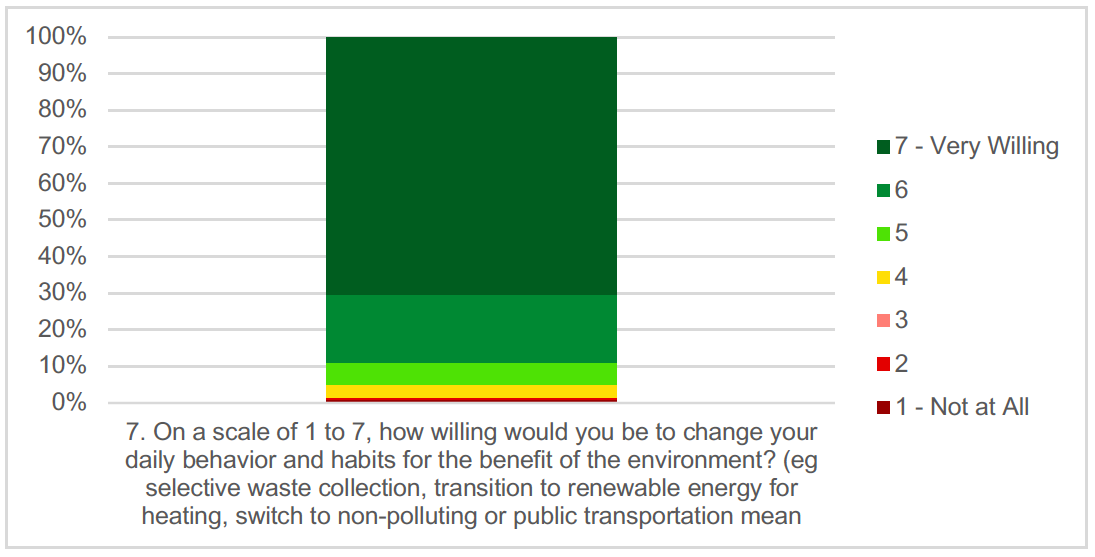
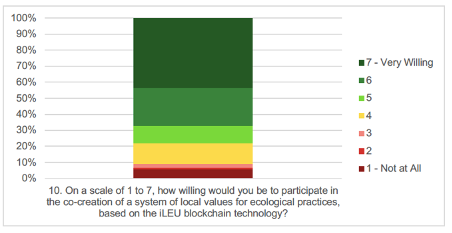
Fig. 3: Openness to Behavioural Change and Fig. 4 Openness to Blockchain-Based Local Value Systems. Source: SPIRE Awareness and openness report.
The survey unveiled relatively high awareness and openness towards most of the project's core topics and proposed actions. It also found a general lack of knowledge concerning the upcycling and potential reuses of plant biomass.
Citizens' awareness of environmental issues varied, even though a positive trend towards sustainable and "green" attitudes and behaviours was observed. The environmental issue was revealed to be of significant concern for the population. A willingness to adopt nature-based solutions and enact behavioural change geared towards improving the local environmental situation was demonstrated. Despite some initial scepticism towards co-creation and participatory activities, a window of opportunity for a transition towards a new green deal has been identified in Baia Mare.
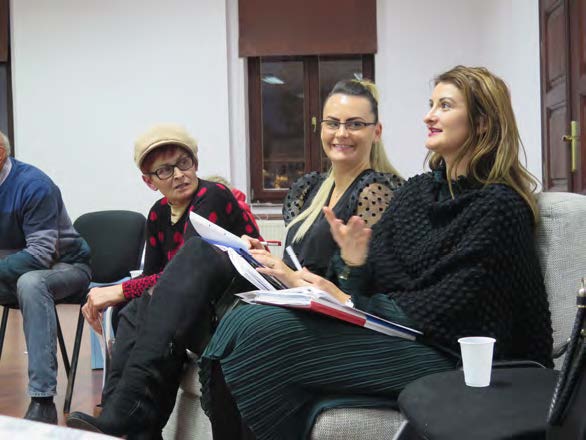
Fig. 5: Spire participatory workshops (Nov 2019). Source: SPIRE technical report 4.1.1.1 Consolidated SPIRE Local Action Network.
Co-creating and making decisions together
From October 2020 till October 2021, a co-creation process was launched in the city, mainly relying on digital activities due to the pandemic - encompassing communication and dissemination actions and consultation, and collaborative workshops with the different communities -. The co-creation process incorporated 3 main stages:
Co-creation Stage 1: Preliminary assessment of the transformation potential including three general objectives:
1.Raise awareness of the ecological and environmental challenges that Baia Mare is facing.
2.Assess community needs and necessities concerning green infrastructure, public space, and facilities/opportunities for locals to spend time in nature.
3.Brainstorm on initial transformation ideas and potential facilities and functions for the pilot sites.
The SPIRE team proposed one online questionnaire focused on needs identification, problem solving, creativity and ideas needed for the ecological transformation of the five public required spaces located in different neighbourhoods. It gathered inspiring answers and proposals.

Fig. 6. Questionnaire 1 results. Source: SPIRE project
An overwhelming majority of survey respondents in Baia Mare think that the role of green spaces and vegetation to fight against air pollution is very important in the city and that we need more green spaces. Urban elements such as pedestrian routes, relaxation areas, unconventional and creative playgrounds, chess areas and local cultural events areas were considered necessary in all the sites (using an increasing scale from 1 to 5, most of the citizens voted between 3 and 5).
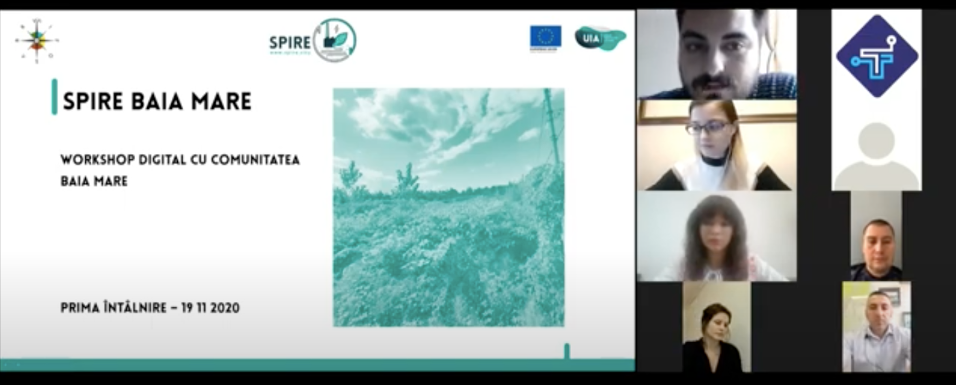
Fig. 7. First community workshop: “Ecologic Transformation of the pilot sites” (19.11.2020 online – in Romanian)
Co-creation Stage 2: Co-designing the zoning and planting plans for SPIRE pilot sites
Following the first community workshop, the Co-creation Stage 2 took place, aiming to co-elaborate the requirements and design ideas for the creation of technical designs (zoning plan and planting/vegetation plan). The general objectives of this Stage 2 were:
1. Involve communities in the decision-making process for the pilot site ecologic transformation.
2. Gather input for site planting requirements: access, zones, ambience, character (through a second questionnaire).
3. Co-elaborate a preliminary design sketch for the pilot sites.
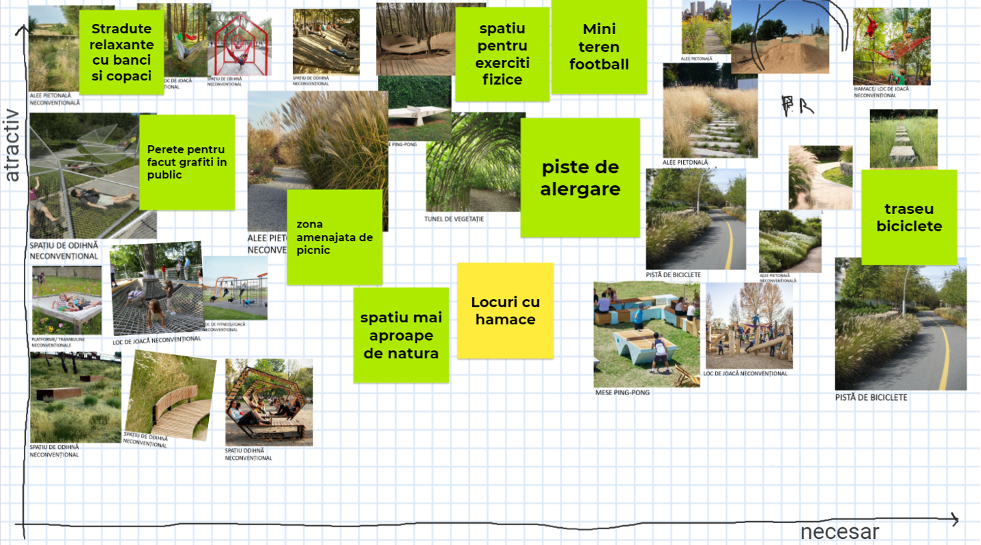
Fig. 8. Second exercise results: Moodboard for one of the contaminated sites – Craica-. Source: SPIRE- Technical Report D6.1.2 Report on co-design workshops with the SPIRE Local Action Network
Blackboard exercises and dynamics were developed trying to find common grounds and shared proposals. The final designs were co-produced with the local communities, and a set of solutions was elaborated: path and alley structure, the location of functional areas, planting areas with indications regarding the planting distance (to be followed when possible), and public spaces and urban furniture. The final results of Co-creation Stage 2 were communicated and disseminated through SPIRE official Facebook page, and were used for the elaboration of the final technical designs for pilot sites.

Fig. 9. Final technical design of one of the pilot sites – Romplumb -. Source: SPIRE- Technical Report D6.1.3 Final technical designs for pilot sites
Co-creation Stage 3: Co-designing micro-interventions to be co-implemented.
The co-creation stage 3 built upon the results of the previous two stages and filled in the gaps in the co-creation process, that occurred due to pandemic conditions. The general objectives of this stage were:
1.Sensory and spatial assessment/understanding of each pilot site: Necessary activity in order to help the participants to develop feasible, effective, and creative solutions.
2.Co-designed solutions of micro-interventions: assess the types of interventions; understand the technicalities of the interventions; and provide a custom, community-developed, solution, that is both ecological, and easy to implement.
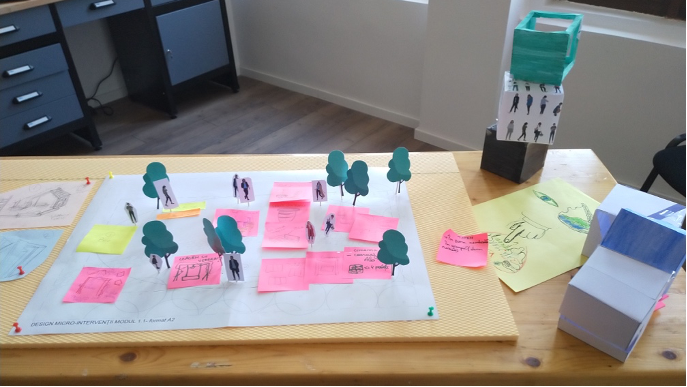
Fig. 10. Third exercise results (urban furniture). Source: SPIRE- Technical Report D6.1.2 Report on co-design workshops with the SPIRE Local Action Network
Participating actively and implementing solutions
The five contaminated sites (Romplumb, Ferneziu, Colonia Topitorilor, Urbis, and Craica) being reclaimed in Baia Mare under the SPIRE project will become strategic components for the local green infrastructure system – mitigating soil pollution and also providing biomass for upcycling in local value chains. They will be integrated into the future healthy natural and semi-natural network within the BM 2050 Master Plan. To achieve this, it is essential that the local communities not only participate actively and adopt the proposals, but that they feel a strong sense of ownership.
On the one hand, several Plantathlons activities have been carried out in the city from spring 2021, supporting citizen-led actions and enhancing the community's involvement in the preparation, seeding and planting for each of the pilot sites.
Returning the pilot sites to the local community as a safe and attractive outdoor space is the first step in building a shared future for the city's metropolitan area. Sustainable pedestrian walkways are proposed for inhabitants and visitors on phytoremediation sites.
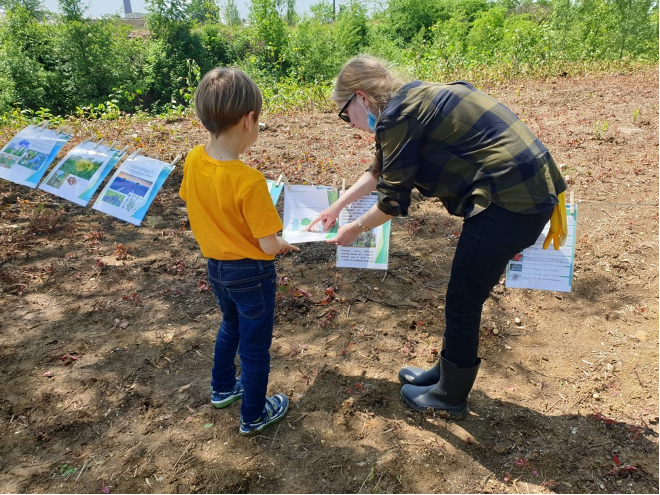
Fig. 11. Planthatlon activities Spring 2021. Source: Baia Mare
On the other hand, the reward-system "immaterial Local Environmental Utility" (iLEU) has already been implemented. It promotes environmental, health, and climate awareness through a behavioural shift at individual and organizational levels.
Baia Mare citizens are invited to use this digital token and to be an iLEU user through a series of granted actions: cycling to work, walking to work, participation in the SPIRE HUB events, or prizes for winners at Planthatlon (zoom in) events and competitions organized by SPIRE HUB, among others. The Spire Hub, in Casa Schreiber, a renovated historic building, is used as the operations headquarters for training and other activities.
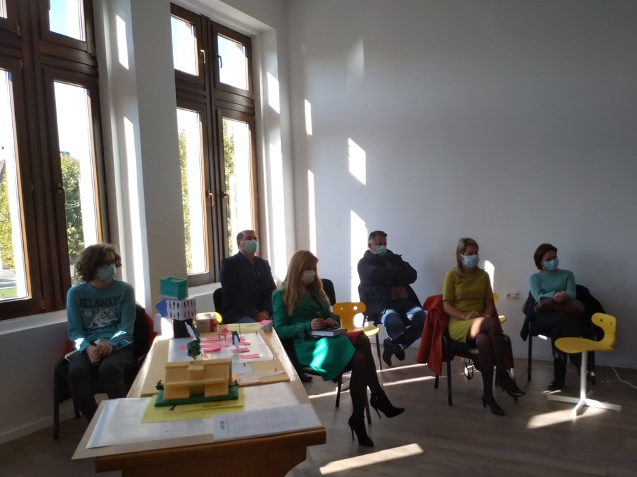
Fig. 12. First training about iLEU uses in the SPIRE HUB. Source: UIA expert
Moving from theory to practice has not been easy for participatory processes, considering that we are immersed in the COVID-19 situation in all European cities. Defining collaborative policy-making for green infrastructure and environmental behaviour shift refers first to raising awareness and advocacy activities. These first steps are followed by co-decision, co-production, and co-implementation processes.
Celaya Alvarez, A. (2020). Creating new social and economic value: Restoring the urban ecosystem.
Celaya Alvarez, A. (2020). Urban soil decontamination for citizens’ health.
Celaya Alvarez, A. (2021). Renaturing cities through phytoremediation
Celaya Alvarez, A. (2021). Resilient cities after COVID-19-.The need of green infrastructure
Celaya Alvarez, A. (2021). What do E-WALLETS have to do with environmental protection?
EC Environment (2019). Ecosystem services and Green Infrastructure
Mihăiescu Tania, Onesciuc Natalia, Pleșa Anca, Verga Pietro L., (2020). SPIRE- Technical Report D.4.3.3., State of play in Baia Mare - Desk analysis, Research repository & Awareness appraisal.
Papina, Codruț (2021). SPIRE- Technical Report D6.1.2 Report on co-design workshops with the SPIRE Local Action Network
Papina, Codruț (2021). SPIRE- Technical Report D6.1.3 Final technical designs for pilot sites
SPIRE project (2020). SPIRE- Technical report 4.1.1.1 Consolidated SPIRE Local Action Network.
SPIRE project (2020). Web-site. http://spire.city
Urban Innovative Actions and Spire project. Web site. https://www.uia-initiative.eu/en/uia-cities/baia-mare
Verga, Pietro L. (2020). SPIRE- Technical Report D.4.1.1 • Awareness and Openness Report
About this resource
The Urban Innovative Actions (UIA) is a European Union initiative that provided funding to urban areas across Europe to test new and unproven solutions to urban challenges. The initiative had a total ERDF budget of €372 million for 2014-2020.
Similar content




